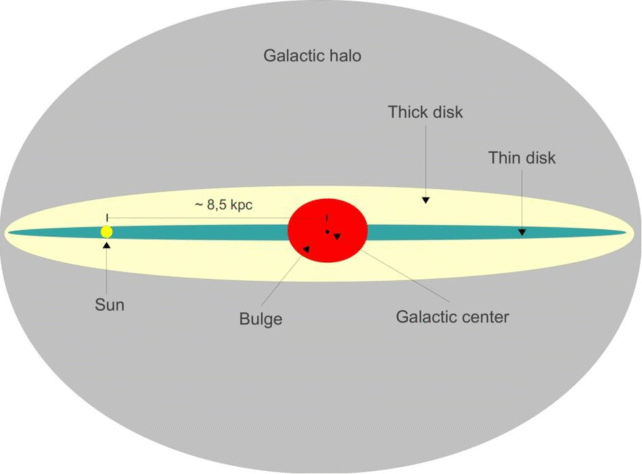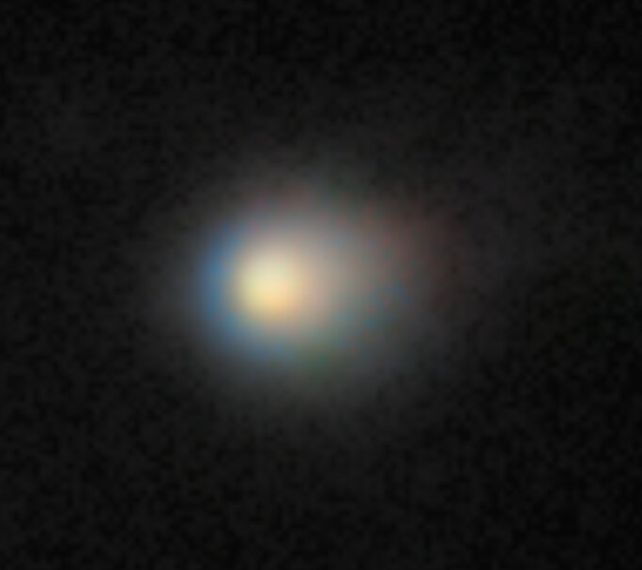We’ve only known about its existence for a few short weeks, and already astronomers have been able to learn a lot about the mysterious interstellar comet 3I/ATLAS.
The object was detected on 1 July 2025, and it made a big splash. Scientists rapidly discovered that it came from outside the Solar System – just the third known object to have done so. Astronomers thronged to study, track, and categorize it.
Thanks to their efforts, we now have a pretty detailed – but still evolving – profile of the unusual comet. Initial observations suggest that it is very different from the other two interstellar objects, 1I/’Oumuamua, which appeared in 2017, and 2I/Borisov, discovered in 2019.
Related: Astronomers Have Traced Our New Interstellar Comet’s Origin, And It’s a First
Here’s what we know. Please note that all papers are, at time of writing, preprints that are awaiting peer review.
Trajectory
 frameborder=”0″ allow=”accelerometer; autoplay; clipboard-write; encrypted-media; gyroscope; picture-in-picture; web-share” referrerpolicy=”strict-origin-when-cross-origin” allowfullscreen>
frameborder=”0″ allow=”accelerometer; autoplay; clipboard-write; encrypted-media; gyroscope; picture-in-picture; web-share” referrerpolicy=”strict-origin-when-cross-origin” allowfullscreen>Ongoing observations of 3I/ATLAS have enabled astronomers to chart its future path through the Solar System. It was discovered when it was at a distance of 4.5 astronomical units from the Sun (one astronomical unit is the distance between Earth and the Sun). That placed it inside the orbit of Jupiter.
It’s traveling at just under 60 kilometers (37 miles) per second, but that will speed up as the comet approaches the Sun. 1I/’Oumumua was traveling at 26 kilometers per second, and 2I/Borisov at 32.
The closest 3I/ATLAS will come to the Sun is around 1.36 astronomical units, inside the orbit of Mars, on 29 October 2025. Its closest approach to Earth will be in December 2025, when it will come to a distance of 1.8 astronomical units.
Origin
The speed and trajectory of 3I/ATLAS suggest that it comes from the thick disk of the Milky Way, the puffy region around the thin disk wherein just 15 percent of the galaxy’s stellar mass resides. This part of the galaxy is relatively sparse, and most of the stars in it are very old.

Age
The comet’s origin provides clues about its age. Since it seems to hail from a region of mostly elderly objects, it stands to reason that 3I/ATLAS is likewise quite venerable.
This is supported by a separate paper that has analyzed the speed and velocity of the comet to try to calculate its age. It is traveling much faster than the two previous interstellar objects, 1I/’Oumuamua and 2I/Borisov, suggesting that it is older than them too. Future observations will help narrow down the object’s age, but this analysis places it somewhere between 3 and 11 billion years old.
The Universe is 13.8 billion years old, and the Sun is 4.6 billion. 3I/ATLAS is unlikely to be at the upper end of the age range, but it’s still probably older than the Solar System.
“This is an object from a part of the galaxy we’ve never seen up close before,” says astrophysicist Chris Lintott of the University of Oxford in the UK, co-author of one of the papers that has emerged. “We think there’s a two-thirds chance this comet is older than the Solar System, and that it’s been drifting through interstellar space ever since.”
Appearance
We don’t know much about the appearance of 3I/ATLAS yet, because it is very small and still quite far away, but initial observations suggest that it is quite large compared to 1I/’Oumuamua and 2I/Borisov – about 10 kilometers across, compared to up to 400 meters long (around 1,300 feet) for 1I/’Oumuamua and 975 meters for 2I/Borisov.

The spectrum of light reflected off the comet has been measured by a number of independent teams, all arriving at the same findings, suggesting that the object has either a complex mix of grain sizes, a different composition from those of Solar System comets, or a combo of both explanations.
New images taken with the Gemini North telescope reveal the comet’s puffy coma, a sort of ‘atmosphere’ of dust and gas that surrounds the comet. As it draws closer to the Sun, scientists expect its activity to pick up, resulting in cometary outgassing.
“3I/ATLAS likely contains ices, especially below the surface, and those ices may start to activate as it nears the Sun,” says astronomer Darryl Seligman of Michigan State University in the US. “But until we detect specific gas emissions, like H2O, CO or CO2, we can’t say for sure what kinds of ice or how much there is.”
What next?
Astronomers are going to continue keeping a close eye on 3I/ATLAS. Since it is so much larger than either of the previous two interstellar visitors, it presents a much better observation target, and its projected origin and age means it represents a rare opportunity to study parts of the galaxy in time and space that are usually out of reach.
Its appearance has another implication, too. It suggests that interstellar visitors are relatively common to the Solar System – which is all the more reason to be excited about the forthcoming ESA/JAXA Comet Interceptor mission, designed to visit comets and study them up close, currently slated for a 2029 launch.

